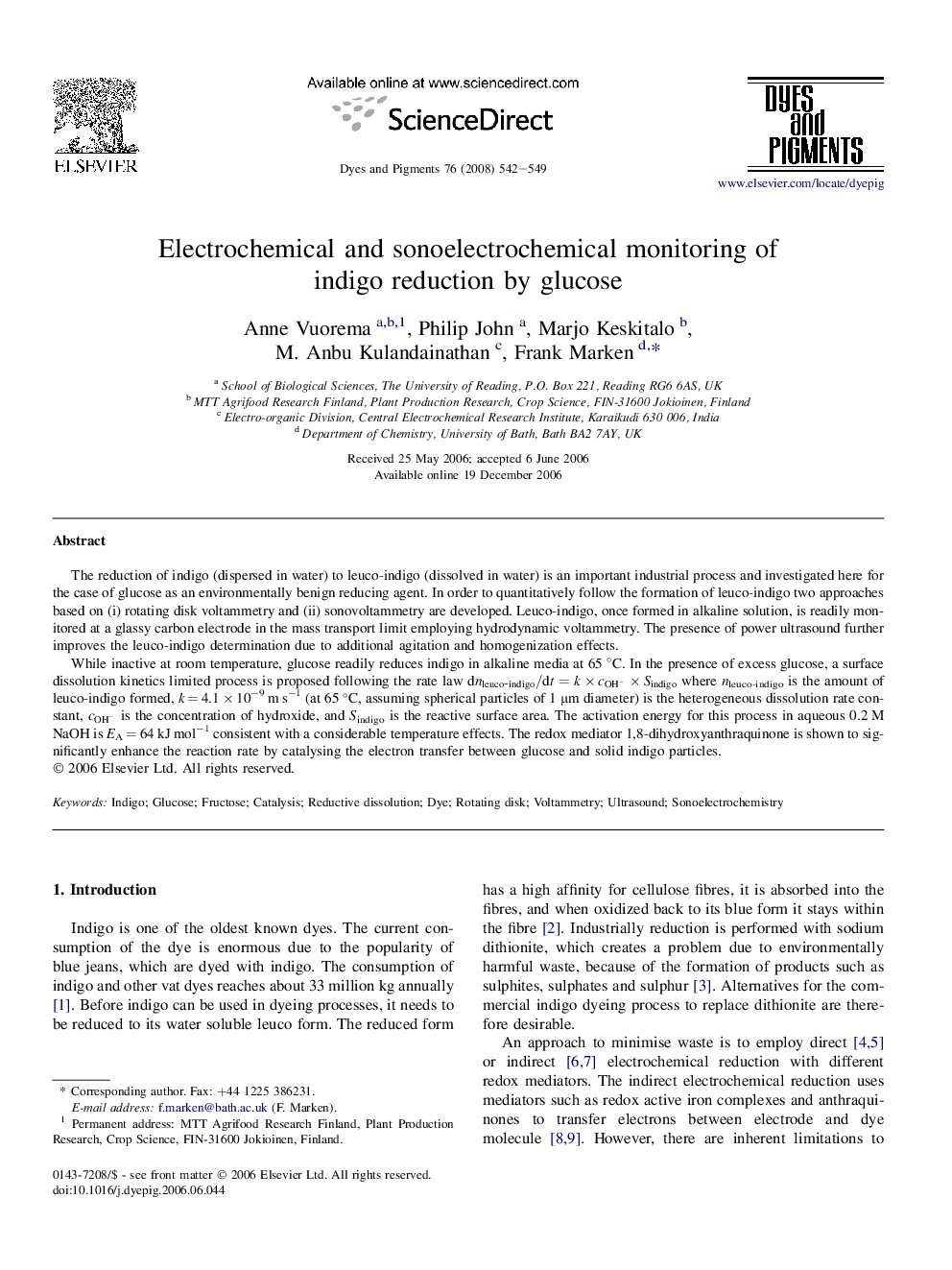| Article ID | Journal | Published Year | Pages | File Type |
|---|---|---|---|---|
| 178317 | Dyes and Pigments | 2008 | 8 Pages |
The reduction of indigo (dispersed in water) to leuco-indigo (dissolved in water) is an important industrial process and investigated here for the case of glucose as an environmentally benign reducing agent. In order to quantitatively follow the formation of leuco-indigo two approaches based on (i) rotating disk voltammetry and (ii) sonovoltammetry are developed. Leuco-indigo, once formed in alkaline solution, is readily monitored at a glassy carbon electrode in the mass transport limit employing hydrodynamic voltammetry. The presence of power ultrasound further improves the leuco-indigo determination due to additional agitation and homogenization effects.While inactive at room temperature, glucose readily reduces indigo in alkaline media at 65 °C. In the presence of excess glucose, a surface dissolution kinetics limited process is proposed following the rate law ⅆnleuco-indigo/ⅆt=k×cOH−×Sindigoⅆnleuco-indigo/ⅆt=k×cOH−×Sindigo where nleuco-indigo is the amount of leuco-indigo formed, k = 4.1 × 10−9 m s−1 (at 65 °C, assuming spherical particles of 1 μm diameter) is the heterogeneous dissolution rate constant, cOH−cOH− is the concentration of hydroxide, and Sindigo is the reactive surface area. The activation energy for this process in aqueous 0.2 M NaOH is EA = 64 kJ mol−1 consistent with a considerable temperature effects. The redox mediator 1,8-dihydroxyanthraquinone is shown to significantly enhance the reaction rate by catalysing the electron transfer between glucose and solid indigo particles.
